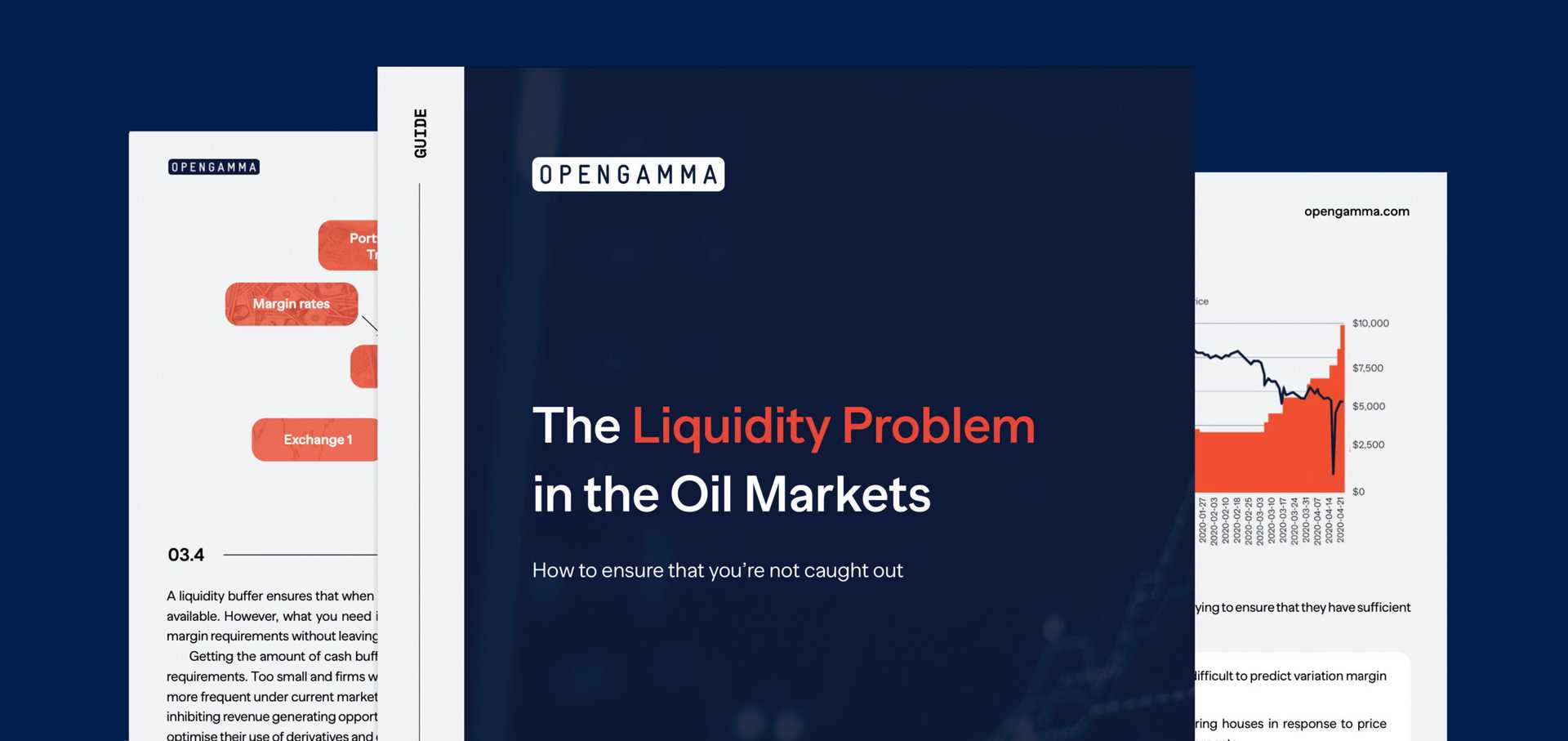There Are Hidden Complexities Involved In Trading New Markets
A lot of firms are looking to broaden the range of products that they trade. They are looking to diversify by exploring new markets and strategies, to improve their performance and to reduce their exposure to specific asset classes. The volatility over the past year has accelerated this trend, with Quant firms that traditionally traded in equity markets moving to include fixed income, and CTAs adding equity and cleared OTC.
However, there are hidden complexities involved in trading new markets, and adding additional products. Firms will have considered the obvious difficulties, such as access to trading venues and support from brokers. But they may not have looked into other areas, such as how they optimise costs, in particular margin, and how they validate what they are being charged by brokers for managing these new portfolios.
Every additional product or market adds its own specific requirements. Solutions that were previously sufficient to manage margin in a single asset class environment are unlikely to be suitable when new products are included. There will be different margin algorithms involved, each with their own data requirements and calculations to support.
Which Markets Are Firms Adding?
The expansion into new markets is not restricted to any particular type of firm. CTAs have taken their lead from some of the major players in the market and expanded their offerings both in terms of products and strategies. This has worked well for some funds, where expansion into macro or RV strategies has delivered increased performance. For others this has not worked so well, although given the market volatility over the past year it is difficult to say whether this diversification has actually helped mitigate a drop in performance that would have been seen otherwise.
Quant firms have been seen to move on from their traditional equity based strategies to start looking at other areas, including strategies more familiar to CTA firms. They have started to consider trading in additional asset classes including FX, CDS and IRS. Some have even looked at cash bonds.
This expansion of the systematic funds into new asset classes is linked to the innovations being implemented by CCPs – where contracts are commoditised to make them suitable for clearing – and also the evolution of electronic trading providing the ability to execute without manual intervention. As new markets are added, as long as the liquidity is there, the systematic funds can consider taking advantage of them.
Another big area of change is the move into China. There are a number of access programs available that originally Asset Managers took advantage of – installing a physical presence in China to allow marketing for investors and trading on the local exchanges. This has led to a number of firms announcing China-focused funds, whilst others have added these markets to existing funds.
The Chinese QFII (qualified foreign institutional investors) program is now available to buy-side firms (traditionally only banks were allowed to participate). This enables trading of onshore China products by offshore managers, providing access to the main Chinese exchanges (DCE, ZCE, INE, SHFE). This means that volume is going to increase and investors will expect to have access to funds including China.
These are not the only changes. Environmental, Social and Governance (ESG) is an area that investors are increasingly taking into account as part of their analysis process to identify material risks and growth opportunities. UMR is also impacting trading decisions, with firms looking at how they can take on the same risk whilst minimising their margin, in particular staying below the $50 million threshold for exchanging margin. This could mean trading ETD products rather than OTC, or vice versa.
Key to this change has been the ability to adapt by hiring the right investment team(s) as well as having access to the required trading venues. What can sometimes be missed is the added complexity once the trades have been executed. Do these positions in new asset classes fit within your current processes? In particular, can you validate the margin being charged by your broker or by the CCP?
If you can’t do this, then you may find that the benefits from diversifying your portfolio have been lost in the costs of funding your margin requirements.
What Are the Hidden Complexities Of Trading New Markets?
This diversification from trading new markets and assets brings with it hidden challenges. For firms that are used to trading a single group of products, then there are a lot of differences that they are going to have to take into account to ensure that they can continue to manage their margin requirements effectively.
It is fairly obvious that new asset classes will imply new margin algorithms, but trading what appear to be similar products can result in needing to support multiple methodologies. Even where, in theory, the same algorithm is used there may be nuances that mean that current solutions can no longer support the required calculations.
Those used to trading equity options and the inclusion of option value in their margin, may be surprised to find that this is not the case for the majority of fixed income options, which are futures style. Similarly, a move into commodities will result in firms potentially needing to support daily contracts and complex calculations for spread products.
There are hidden complexities in trading new markets, and indeed hidden challenges. Each futures and options market has its own approach to calculating margin, either using variants of a standard algorithm like SPAN, or having their own independent methodology.
Where tools are provided, input formats for positions can vary, and if trying to replicate then formats for parameter files can be vastly different even where the algorithm is the same.
In the cleared OTC space, every CCP has its own independent margin algorithm, and where replication tools are provided then each will have a bespoke format for trade input. And note that these methodologies are very dependent on the product, so a CDS margin calculation will potentially be based, for example, on a completely different type of VaR compared to an IRS calculation.
Added to this, brokers may have GNAs which firms can take advantage of when trading products across multiple markets. However, this is an additional calculation that will need to be replicated to enable firms to predict their margin requirements.
In the non-cleared world there are even more calculations that need to be supported. PB models are per broker and asset class, so the more of these that are traded the more methodologies that need to be added. And if the business falls under UMR, then it will be necessary not just to support the SIMM model, but also the calculation of sensitivities and production of CRIF format for each of the different asset classes.
What Do Firms Need To Do If They Intend To Move Into New Markets?
To be able to optimise margin and manage their liquidity requirements, firms need to be able to predict and validate their margin for any new market. With each CCP and product combination potentially implying a different methodology, then using the CCP provided tools may no longer be a suitable solution. Instead, firms will need access to margin analytics that support the required breadth of coverage.
And it’s not just the CCP methodologies. Firms will also need to ensure that they have support for other algorithms for products that don’t fall within these margining regimes. This could include SIMM, along with various PB and GNA models depending on the broker.
Firms need to ensure that they have the correct tools in place to be able to deliver the operational efficiencies required to ensure that they benefit from trading new markets, and don’t instead find themselves lumbered with additional costs and unable to proactively manage their margin requirements.




